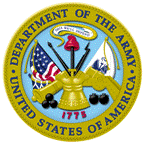United States Department of Defense
Document Type
Article
Date of this Version
2004
Abstract
An ELISA-based assay is described for the measurement of antibodies to squalene (SQE) in human serum and plasma. The assay was adapted from the previously described assay for murine antibodies to SQE (J. Immunol. Methods 267 (2002) 119). Like the murine SQE antibody assay, the human antibody assay used sterile cell culture 96-well plates coated with SQE (20 nmol/well). Phosphate-buffered saline (PBS)–0.5% casein was used as both a blocking agent and dilution buffer. The assay has a high through-put capacity and is reproducible and quantitative. This assay was used to evaluate samples from three different human cohorts. The first cohort was retired employees of the United States Army Medical Research Institute of Infectious Diseases (USAMRIID alumni). The mean age was 68 (N = 40; range 58–82). Most were vaccinated with the U.S. licensed anthrax vaccine (AVA) and most had received several other vaccines through a USAMRIID special immunization program. The second cohort was of similar age (N = 372; mean age 67; range 54–97) from the normal population of Frederick, MD and were not vaccinated with AVA. The third cohort (N = 299) was from Camp Memorial Blood Center, United States Army Medical Department Activities, Fort Knox, KY. (No additional volunteer information is available.) Using this new ELISA method, antibodies to SQE were detected in all three of the cohorts. IgG antibodies to SQE were detected in 7.5% and 15.1% of the samples from the USAMRIID alumni and Frederick cohorts, respectively. These differences were not significantly different (χ(1)2 = 1.69, p = 0.19). In contrast, no IgG antibodies to SQE were detected in the Fort Knox cohort which is significantly different than the Frederick cohort (χ(1)2 = 49.25, p < 0.0001). IgM antibodies to SQE were detected in 37.5% and 32.3% of the samples from the USAMRIID and Frederick cohorts, respectively, but there was no significant difference between the cohorts.



Comments
Published in Journal of Immunological Methods 286 (2004) 47– 67.